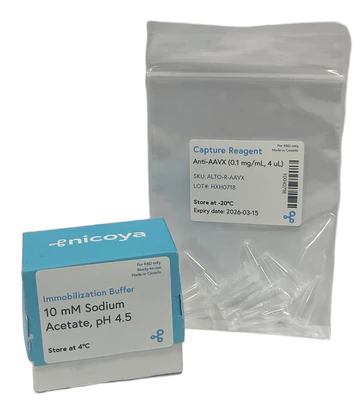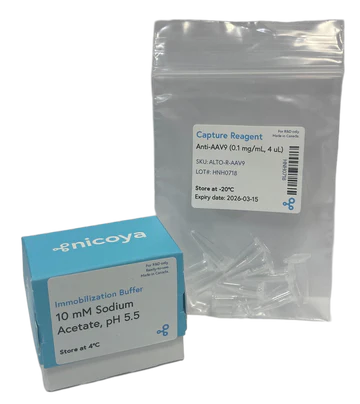What are AAVs?
Adeno-associated viruses (AAVs) are small, non-enveloped DNA viruses widely used as vectors for gene therapy due to their:
- Low immunogenicity
- Ability to infect dividing and non-dividing cells
- Potential for long-term gene expression
AAVs for gene therapy have “…attracted a significant amount of attention in the field, especially in clinical-stage experimental therapeutic strategies. The ability to generate recombinant AAV particles lacking any viral genes and containing DNA sequences of interest for various therapeutic applications has thus far proven to be one of the safest strategies for gene therapies.”2
What is Huntington’s disease?
Huntington’s is a rare, inherited disease that causes nerve cells in the brain to decay over time.3 Huntington’s disease causes physical, mental, and emotional changes in patients and is estimated to affect over 40,000 Americans currently, with another 200K at-risk. 4,5
Although no cure currently exists for Huntington’s disease, patients can benefit from a multidisciplinary approach to care that addresses both physical, mental, and emotional symptoms. The estimated life span after diagnosis for a Huntington’s disease patient is 10-30 years.4,5
Recent developments for AAVs and Huntington’s disease
UniQure recently announced plans to submit its Huntington’s disease AAV gene therapy, AMT-130, for approval in 2026.
In a 36-month trial, the therapy was shown to slow disease progression by 75% for patients receiving the high dose of the gene therapy, based on the Unified Huntington’s Disease Rating Scale (UHDRS). Patients receiving the high-dose treatment also experienced a 60% slowing in disease progression when measured by the Total Functional Capacity (TFC) scale. In addition, uniQure reported positive trends in various measures of motor and cognitive function, highlighting the therapy’s potential to significantly impact the lives of those affected by Huntington’s disease.6
“We are incredibly excited about these topline results and what they may represent for individuals and families affected by Huntington’s disease. These findings reinforce our conviction that AMT-130 has the potential to fundamentally transform the treatment landscape for Huntington’s disease, while also providing important evidence supporting one-time, precision-delivered gene therapies for the treatment of neurological disorders.”6
– Walid Abi-Saab, M.D. uniQure Chief Medical Officer
Nicoya’s AAVX and AAV9 Capture Kits
As the development of AAV-based therapeutics accelerates, there is a growing demand for robust analytical techniques that can provide detailed insights into the quantity of virus, its integrity, stability, and how it interacts with biological targets.
Surface plasmon resonance (SPR) is a label-free, real-time technique that enables precise measurement of molecular interactions, including those involving large, multivalent particles such as AAVs. By immobilizing AAVs, receptor fragments, or antibodies onto a sensor surface, researchers can assess the binding kinetics, specificity, and affinity of AAV capsids under near-physiological conditions.
To support researchers developing new AAV-based therapies, Nicoya has introduced AAVX and AAV9 Capture Kits, along with accompanying protocols. These Capture Kits and protocols are pre-optimized for Alto™, Nicoya’s Digital surface plasmon resonance™ (SPR) platform, allowing users to reduce experiment design time by offering a pre-developed assay configuration.
Conclusion
The recent announcement about uniQure’s progress in Huntington’s disease gene therapy highlights the growing potential of AAV-based therapies to address complex genetic conditions. As the field continues to advance, having reliable and efficient tools to study and characterize AAVs will be essential for driving innovation and ensuring the safety and effectiveness of future treatments. Nicoya is proud to contribute to this growing field with the introduction of our AAVX and AAV9 Capture Kits. With these kits, researchers have access to streamlined solutions designed to accelerate AAV development and address key challenges in gene therapy.
Sources:
1. Nicoya. (2025, September). Tech Note: AAVs . Nicoya. https://nicoyalife.com/wp-content/uploads/2025/09/Nicoya-TechNote-AAVs.pdf
2. Naso, M. F., Tomkowicz, B., Perry, W. L., 3rd, & Strohl, W. R. (2017). Adeno-Associated Virus (AAV) as a Vector for Gene Therapy. BioDrugs : clinical immunotherapeutics, biopharmaceuticals and gene therapy, 31(4), 317–334. https://doi.org/10.1007/s40259-017-0234-5
3. Mayo Clinic Staff. (2024, April 25). Huntington’s disease: Symptoms & causes. Mayo Clinic. https://www.mayoclinic.org/diseases-conditions/huntingtons-disease/symptoms-causes/syc-20356117
4. Cleveland Clinic. (2023, September 27). Huntington’s disease. My Cleveland Clinic. https://my.clevelandclinic.org/health/diseases/14369-huntingtons-disease
5. Huntington’s Disease Society of America. (n.d.). Overview of Huntington’s disease. https://hdsa.org/what-is-hd/overview-of-huntingtons-disease/
6. Waldron, J. (2025, September 24). uniQure hopes to launch 1st Huntington’s gene therapy next year following phase 1/2 success. FierceBiotech. https://www.fiercebiotech.com/biotech/uniqure-hopes-launch-1st-huntingtons-gene-therapy-next-year-following-phase-1-2-success


